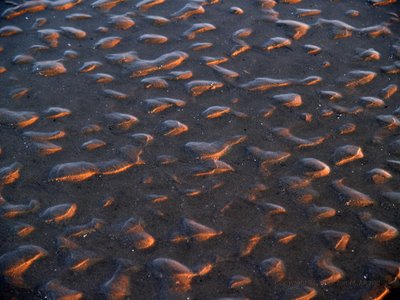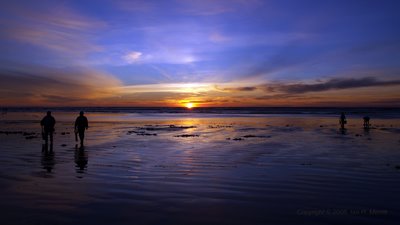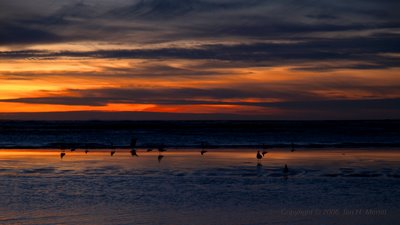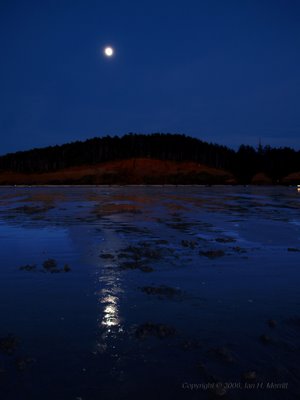
Washington's Copalis Beach (Google Maps, MS Live) is inundated by groups of people in search of the prized Pacific Razor Clam.
Click the image to enlarge.

Copalis Beach is extraordinarily flat. As the tide recedes, movements of the clams beneath the sand produce telltale markings on the surface in the form of small concave depressions often surrounded by a raised ring. These range in size from about 1/4 inch up to 2 inches in diameter. Walking slowly along the sand, diggers scan the surface for these signs.


Illuminated by the low-angle sunlight, patterns in the sand carved by the waves and left behind by the tide present interesting photographic subjects.

Once the surface mark of a clam is spotted, a tubular tool is used to extract a core from the beach sand. Pressing this tube into the sand, the air vents out through a hole in the handle. Covering this hole, the tube is then withdrawn with its contents. The clam may or may not come up in the core. It's often necessary to reach into the hole and remove it by hand. This must be done quickly as the clams immediately begin digging deeper when their environment is disturbed. They can move remarkably quickly through the sand. The ambient temperature was in the upper 30s and falling when these pictures were taken.

In the wake of all the clam digging activity, the beach is strewn with collapsing holes, cores, and occasional dead clams and crabs or pieces of them.

The search continues...

As the sun finally sets, seagulls scavenge for the dead bits left behind by the clam diggers.

A nearly full moon gently illuminates the beach enabling the search to continue after sundown.















3 comments:
These scenes are amazing. And the info is illuminating as well!
Now that's what I'm talking about!
Very beautiful!
Post a Comment